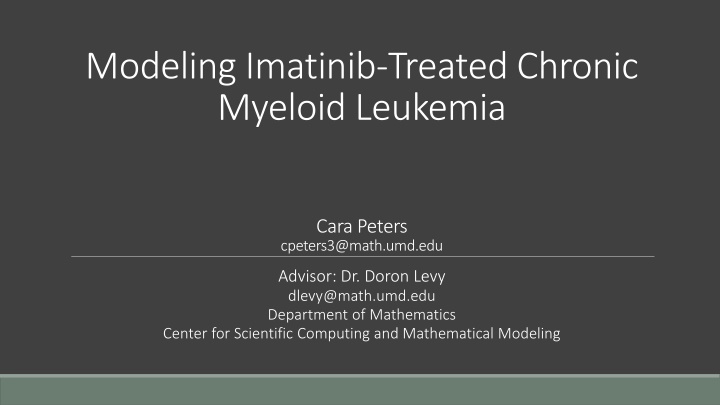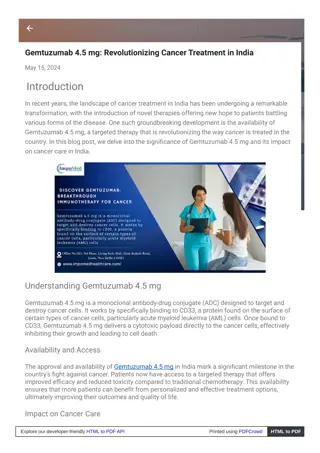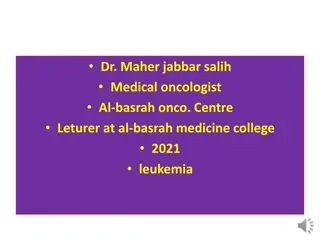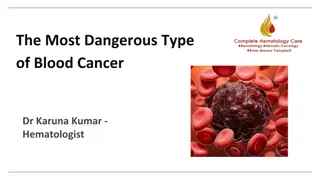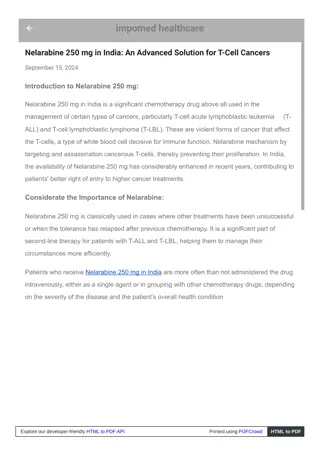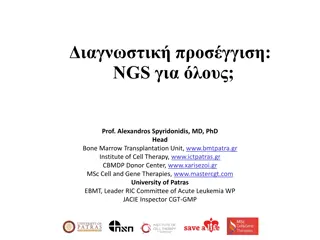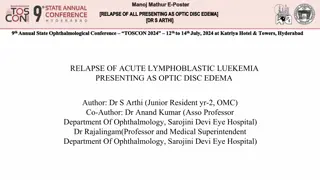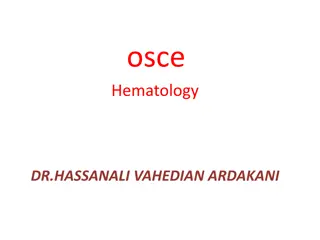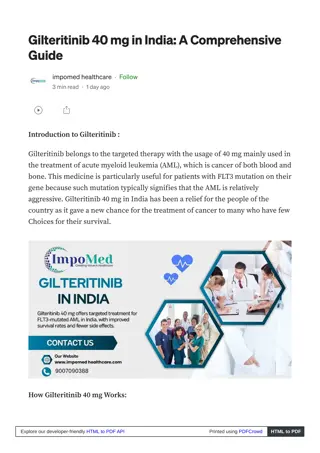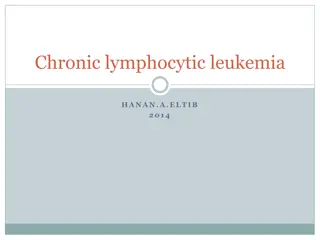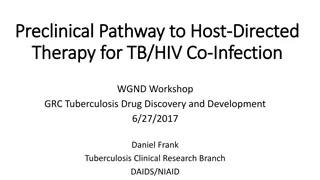Modeling Imatinib Treatment for Chronic Myeloid Leukemia
The dynamics of Chronic Myeloid Leukemia (CML) under Imatinib therapy through mathematical modeling. Understand disease genesis, steady-state occurrence, transition rates between cell populations, and drug administration strategies. Three model types are employed to capture the interactions of non-leukemia cells, leukemia cells (Ph+), and Imatinib-affected leukemia cells, incorporating parameter values from clinical data.
Download Presentation

Please find below an Image/Link to download the presentation.
The content on the website is provided AS IS for your information and personal use only. It may not be sold, licensed, or shared on other websites without obtaining consent from the author.If you encounter any issues during the download, it is possible that the publisher has removed the file from their server.
You are allowed to download the files provided on this website for personal or commercial use, subject to the condition that they are used lawfully. All files are the property of their respective owners.
The content on the website is provided AS IS for your information and personal use only. It may not be sold, licensed, or shared on other websites without obtaining consent from the author.
E N D
Presentation Transcript
Modeling Imatinib-Treated Chronic Myeloid Leukemia Cara Peters cpeters3@math.umd.edu Advisor: Dr. Doron Levy dlevy@math.umd.edu Department of Mathematics Center for Scientific Computing and Mathematical Modeling
Introduction CML cancer of the blood 20% of all leukemia Genetic mutation in hematopoietic stem cells Philadelphia Chromosome (Ph) Increase tyrosine kinase activity allows for uncontrolled stem cell growth Treatment Imatinib: tyrosine kinase inhibitor Controls population of mutated cells Not effective as a cure Figure: Chronic Myelogenous Leukemia Treatment. National Cancer Institute. 21 Sept. 2015. Web. 2
Cell State Diagram (Roeder et al., 2006) Stem cells Non-proliferating (A) Proliferating ( ) Precursor cells Mature cells Circulation between A and based on cellular affinity High affinity: likely to stay in/switch to A Low affinity: likely to stay in/switch to Ph+ cells affected during the G1 phase of the cell cycle Figures: Kim et al. in Bull. Math. Biol. 70(3), 728-744 2008 3
Project Goal Follow dynamics of CML under drug therapy Questions How long does disease genesis take? With treatment, does a steady state occur? What does it look like? What are the transition rates between A and ? Drug administration when, how often? 4
Approach Mathematically model clinically observed phenomena of three non-interacting cell populations Nonleukemia cells (Ph-) Leukemia cells (Ph+) Imatinib-affected leukemia cells Three model types based on cell state diagram Agent Based Model (Roeder et al., 2006) System of Difference Equations (Kim et al., 2008) PDE (Kim et al., 2008) Parameter values based on clinical data 5
Model 1: Roeder et al., 2006 Single cell-based stochastic model Individual cells simulated according to set rules Rules applied at each time step, simultaneously update status of all cells A(t), (t) determined then stem cell populations updated CML genesis modeled starting with nonleukemia cells only Alter f , f of a single proliferating stem cell, track as Ph+ Imatinib treatment Alteration of f for Ph+ cells to new value with probability rinh Ph+ proliferative cells killed with probability rdeg Complexity based on number of agents ~105cells Down-scaled to 1/10 of realistic values 6
Model 2: Kim et al., 2008 Reduce complexity of ABM to attain simulation of realistic number of cells Figures: Kim et al. in Bull. Math. Biol. 70(3), 728-744 2008 7
Model 3: Kim et al., 2008 Transform model into a system of first order hyperbolic PDEs Consider the cell state system as a function of three internal clocks Real time (t) Affinity (a) Cell cycle (c) Each cell state can be represented as a function of 1-3 of these variables Numerical Simulation Explicit solvers Upwinding Composite trapezoidal rule First order time discretization Figures: Kim et al. in Bull. Math. Biol. 70(3), 1994-2016 2008 8
Implementation Implementation Hardware Asus Laptop with 8 GB RAM Implementation Language Matlab R2014a 9
Validation ABM and Difference Equations Run simulations with low cell count increase to realistic numbers Replication of figures, achieve similar cell count values Figure: Kim et al. in Bull. Math. Biol. 70(3), 728-744 2008 PDE Verify PDE method works by testing on scalar first order hyperbolic PDEs with known result ??+ ???= 0 ??+ ??+ ??= 0 10
Testing PDE model Adapt code to CML specific PDE system Verify results based on figures and values in Kim et al. Figure: Kim et al. in Bull. Math. Biol. 70(3), 1994-2016 2008 Test all models with new parameter values determined from clinical data of a new set of CML patients 11
Project Schedule Phase 1: October early November Implement difference equation model Improve efficiency and validate Phase 2: November early December Implement ABM Improve efficiency and validate Phase 3: December mid February Implement basic PDE method and validate on simple test problem Phase 4: mid February April Apply basic method to CML - Imatinib biology and validate Test models with clinical data 12
Deliverables Matlab Code Agent Based Model Difference Equations Model PDE model Database of parameter values and initial conditions Figures produced during validation and testing Proposal Document and Presentation Mid Year Report and Presentation End of Year Report and Presentation 13
References Roeder, I., Horn, M., Glauche, I., Hochhaus, A., Mueller, M.C., Loeffler, M., 2006. Dynamic modeling of imatinib-treated chronic myeloid leukemia: functional insights and clinical implications. Nature Medicine. 12(10): pp. 1181-1184 Kim, P.S., Lee P.P., and Levy, D., 2008. Modeling imatinib-treated chronic myelogenous leukemia: reducing the complexity of agent-based models. Bulletin of Mathematical Biology. 70(3): pp. 728-744. Kim, P.S., Lee P.P., and Levy, D., 2008. A PDE model for imatinib-treated chronic myelogenous leukemia. Bulletin of Mathematical Biology. 70: pp. 1994-2016. 14
